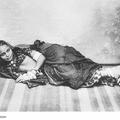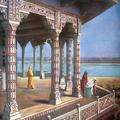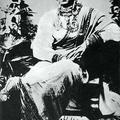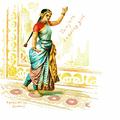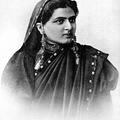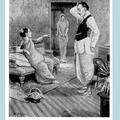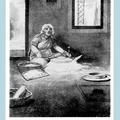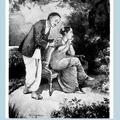Jaipur Woman
This image of a reclining woman was one of the most popular postcards by the leading early Jaipur photographer and postcard publisher, Gobindram Oodeyram, and was also printed with the title Sleeping Hindu Woman.
Although the image dates from the

